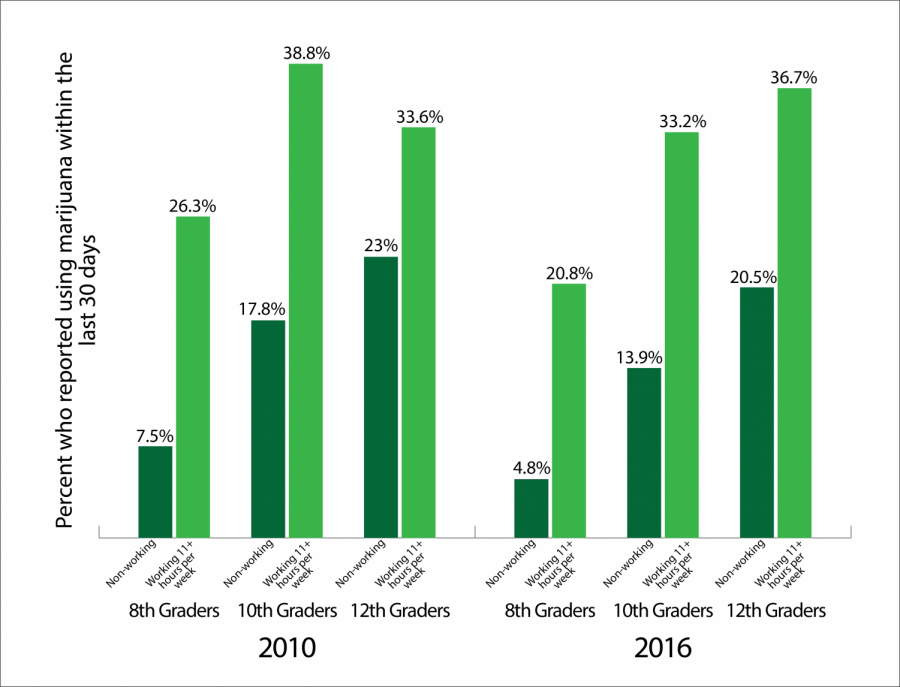Research says cannabis use has decreased among youth
Data taken from over 75,000 youth school surveys
OLIVER MCKENNA | THE DAILY EVERGREEN
Researchers found a “dose-response relationship” between cannabis users and working hours.
March 28, 2019
WSU researchers found cannabis use among adolescents who work fewer than 10 hours per week decreased since its legalization.
This group was led by Janessa Graves, WSU College of Nursing assistant professor and senior Research Scientist Julia Dilley, who was a co-author of the article published in the Journal of Adolescent Health. She said the focus of the study was to look at the prevalence of youth cannabis use prior to legalization and after legalization.
Dilley said they had three groups of children they collected data on: children who do not work, children who work fewer than 10 hours per week and children who work more than 11 hours per week.
She said they found children who do not work use cannabis less after legalization, children who work fewer than 10 hours use cannabis about the same and children who work more than 11 hours use cannabis more often.
Dilley said they used data collected by the Washington State Healthy Youth Survey for their research.
“Washington state actually has, in my opinion, one of the best school-based surveys in the U.S.,” she said.
Dilley said they took the data from surveys in 2010, which was before the legalization, and from 2016, which was after legalization. Over 75,000 children participated in both years.
The survey collects data from children in sixth, eighth, 10th and 12th grade, she said, but for their research, they did not include the data from sixth graders.
Dilley said they found the prevalence of current youth cannabis use, which they describe as any point in the past 30 days, has declined since legalization and the opening of the market.
One of the main focuses of their research centered on the relationship between cannabis use and employment in children, she said. For this part of their research, they looked at the data from 12th–graders.
“I was a little surprised to see that very clear dose-response relationship among the older kids,” Dilley said. “It makes sense to me now, but it was a bit of a surprise that we did not see that kind of difference in trend in the younger kids.”
The researchers believe having a car or job provides a sense of independence, which could increase cannabis use in children who work, Dilley said.
She also said older children are more likely to work retail, restaurant or similar jobs, which makes them more likely to have coworkers over the age of 21 who expose them to cannabis.
Dilley said the biggest takeaway from this research is the importance of parents and people who work with children to recognize the risks to children who work. It is important to communicate clearly not to use cannabis at their age because their brains are still developing.
“You do not really learn anything different there,” she said, “it just underscores the importance of having those conversations with young people and sending clear messages.”
This story has been updated to clarify the lead.









